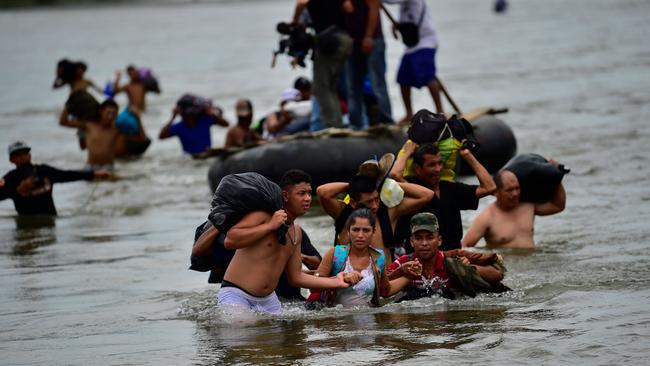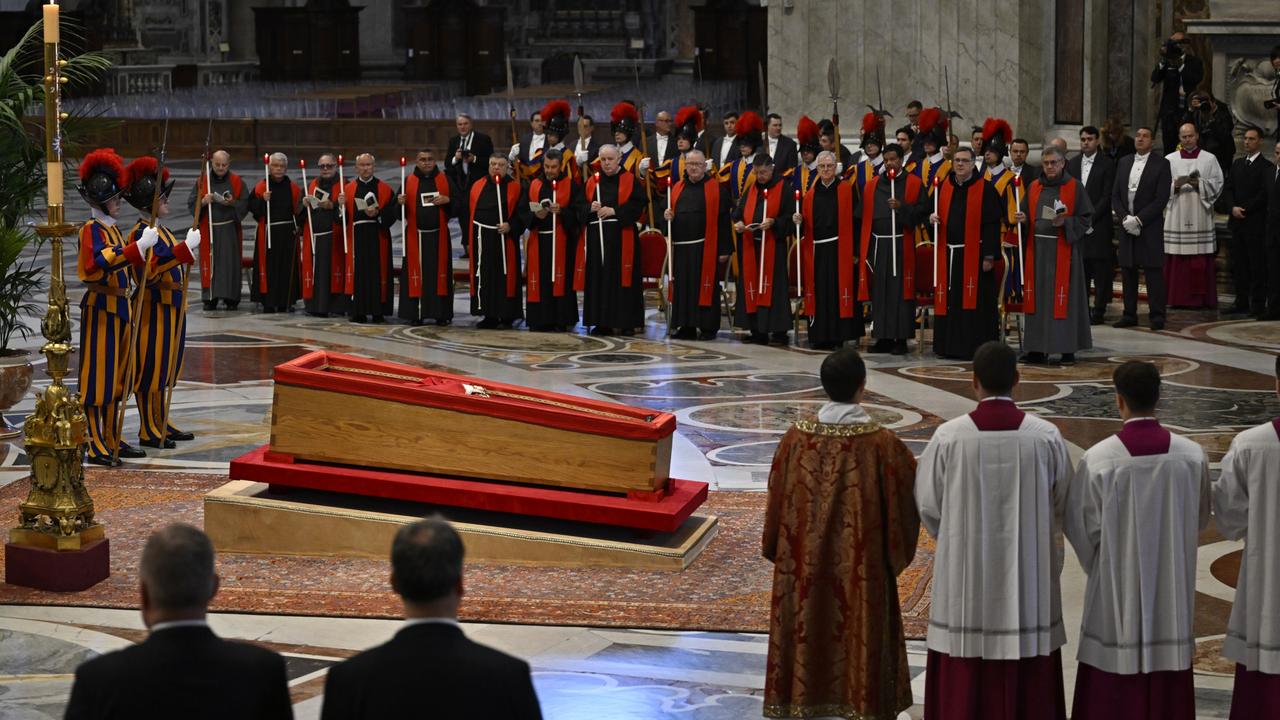Caravan floats UN refugee camps on Mexican border
Mexico’s southern border has become the new frontline in Donald Trump’s efforts to stop waves of people fleeing Latin America.

Mexico’s southern border has become the new frontline in Donald Trump’s efforts to stop waves of people fleeing Latin America’s deadly northern triangle for safety and economic opportunity in the US.
Mexico was last night struggling to control a caravan of several thousand from Honduras after a fiery confrontation on a border bridge with Guatemala.
Dozens of women and children were taken to a shelter where they would be processed. Several hundred had accepted government offers of safe passage back to Honduras.
But about 2000 who crossed the river by foot or barge voted in a show of hands to re-form and continue a march northwards to seek refuge in the US.
Mexico launched an extraordinary effort to stop the caravan after pressure from Mr Trump, who had threatened to pull out of a recently agreed new trade pact with Mexico if it did not act.
Mr Trump has blamed Democrats for the caravan and used it to rally support in the mid-term elections on November 6, but he publicly thanked Mexico after hundreds of police were sent to the country’s southern border.
“Mexico has been so incredible. Thank you Mexico and the leaders of Mexico, thank you. And you know why, because now Mexico respects the leadership of the United States,” Mr Trump said.
Analysts agree the long-term solution must be to stem violence and improve opportunity in the gang-ridden communities that people were seeking to flee.
In the meantime, it is possible that UN-backed refugee camps will be established in Mexico’s south to stop the flow to the US.
Jonathan Wachtel, a former US immigration spokesman and US representative to the UN, said it might be necessary to follow the lead of Europe in setting up regional camps to process those claiming asylum. “In this case it may mean setting up centres in Mexico or Central America,” Mr Wachtel said. “So we don’t see the ridiculous situation that we have seen with this border bridge.”
The establishment of UN refugee camps might allow the US to return asylum claimants to Mexico’s southern border rather than allow them to be processed in the US.
Mr Wachtel said the failure was in the countries themselves that did not provide security or economic hope. “When we try to address this problem, we have to look at the origin,” he said.
Mexico President Enrique Pena Nieto said: “Mexico does not permit and will not permit entry into its territory in an irregular fashion, much less in a violent fashion.”
The latest caravan originated in the Honduran town of San Pedro Sula a week ago, with about 2000 would-be migrants drawn together by social media.
It is notably different from the “Migrant Viacrucis” organised in April every year by NGOs to draw attention to the plight of Central American migrants.
Guatemala has organised a fleet of buses to take Hondurans back to their country.
Last night, more than 300 people had taken up a government offer of a bus ride home to their country, police said, but thousands have vowed to continue on.
Mexico’s National Human Rights Commission says it has been working to guarantee the rights of migrants. Commission personnel were providing legal advice, including procedures for making refugee applications. Some were given 45-day visitor’s permits, which in theory could allow them time to reach the US border. Other migrants had applied for refugee status in Mexico.
The migrants are generally fleeing poverty and insecurity in Honduras, where powerful street gangs rule their turf with brutal violence. With a homicide rate of 43 per 100,000 citizens, Honduras is one of the most violent countries in the world.
Additional Reporting: AP




To join the conversation, please log in. Don't have an account? Register
Join the conversation, you are commenting as Logout